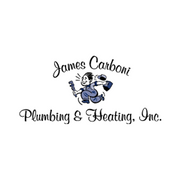What Are the Differences Between Hot Water & Steam Boilers?

You may be curious about hot water or steam boilers, especially if you’re looking to upgrade your system or just moved in to a new home that features one of these heating fixtures. Both devices use mechanisms and channels to convert heated water into toasty warm air that’s then distributed throughout the house. While they serve identical purposes, they also have important differences. Here’s what you need to know.
What to Know About the Two Boiler Types
Hot Water Boilers
These units are typically fueled by either oil, gas, or electricity. The majority of hot water boilers work in tandem with an existing thermostat in the home. When the temperature drops, the unit will automatically turn on and the combusting fuel will heat up the water inside the boiler.
Once heated, the water becomes steam and circulates through the house from a radiator. When the steam condenses, it cycles back to the hot water boiler and repeats the heating process all over again. The boiler will then turn off once your home’s interior temperature reaches your desired level.
To work properly, a hot water boiler must have the proper amount of water, an electric pump, heat-out pipes, expansion tanks, flow check valves, and other components for circulation. Most devices have a relatively low heating temperature that ranges between 180 and 200 degrees Fahrenheit. These kinds of boilers may periodically need cleaning with oxygen-based chemicals to prevent corrosion.
Steam Boilers
 These units are typically found in older homes and apartment buildings. Much like hot water boilers, these types of heating systems channel steam through a series of pipes. However, their operating mechanisms are slightly different.
These units are typically found in older homes and apartment buildings. Much like hot water boilers, these types of heating systems channel steam through a series of pipes. However, their operating mechanisms are slightly different.
Steam boilers are fueled by gas, oil, or coal. They rely on radiator valves to distribute heat. The way most units work is heat is transferred from the fuel source to an internal vessel to produce steam. These apparatuses need a higher heating temperature for proper operation, with a boiling point typically in the 212-degree Fahrenheit range. Once the steam is released, it travels through a piping system to distribute heat.
Steam boilers also use several components to keep heat circulating in a safe manner. These include pressure gauges, release valves, and water level indicators. Unlike hot water heaters, they don’t require pumps to propel steam into the pipes; instead, they rely only on the natural expansion of steam, which can cut energy costs. However, they tend to provide less consistent or reliable heat.
For more information about your heating system and possible upgrades, James Carboni Plumbing & Heating in North Franklin, CT, is your trusted resource. For 56 years, the family-owned firm has served homes and businesses with top-quality installation, repair, and maintenance services. Stop by the showroom today to browse through the latest inventory of heating units and plumbing fixtures. Give the team of licensed plumbers a call at (860) 642-7847 or visit the website for extensive information on products and services.
About the Business
Have a question? Ask the experts!
Send your question

